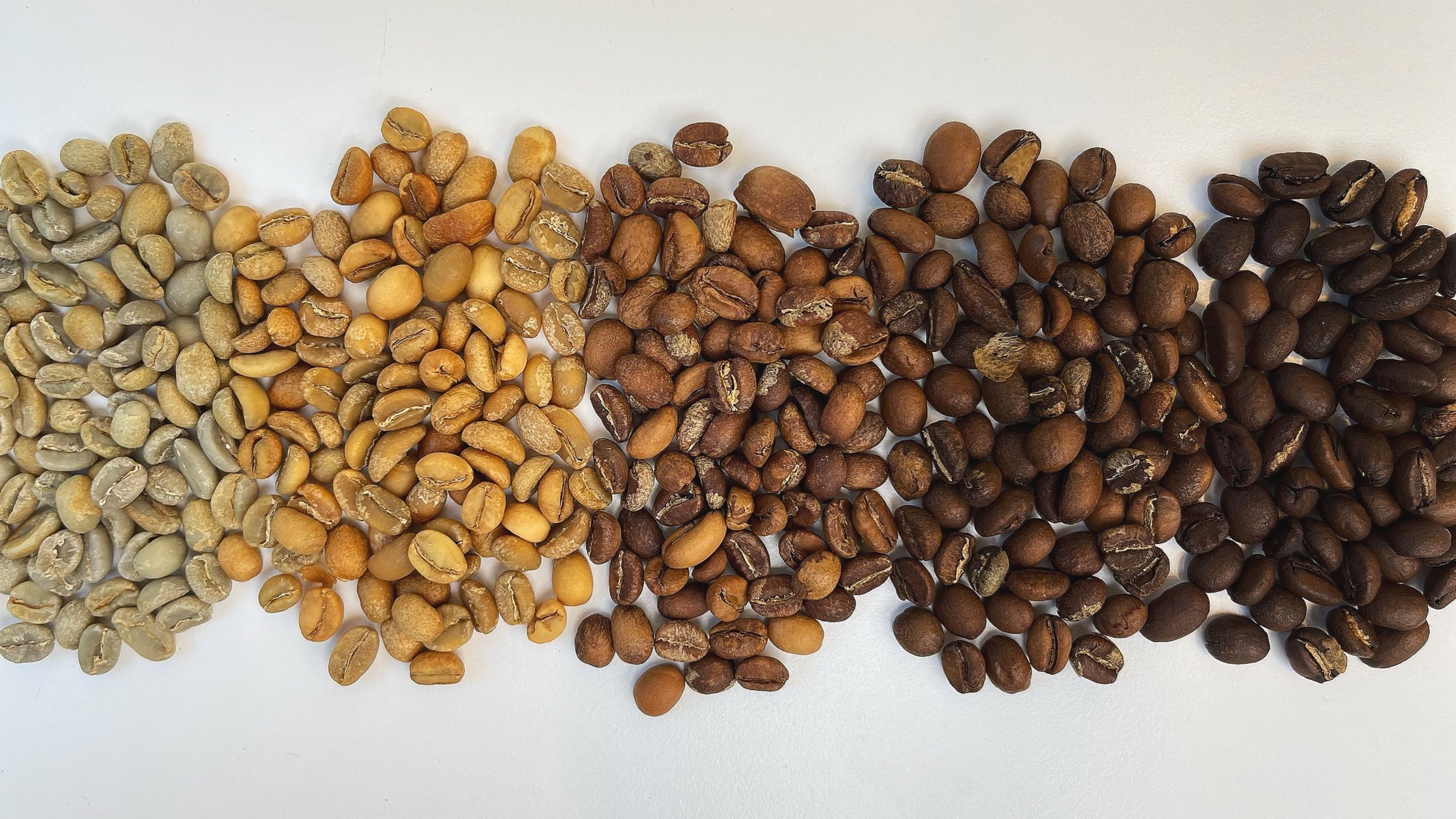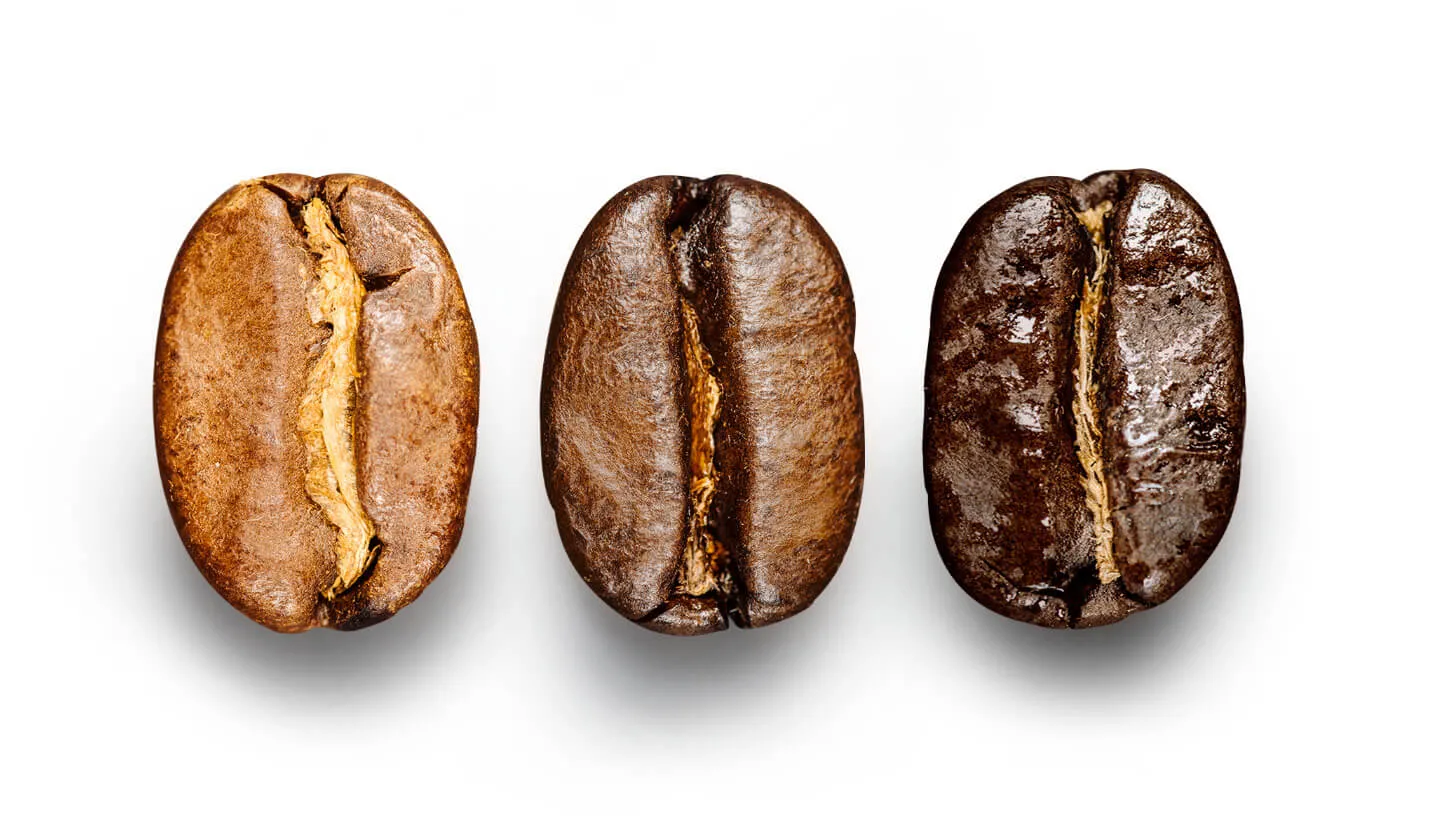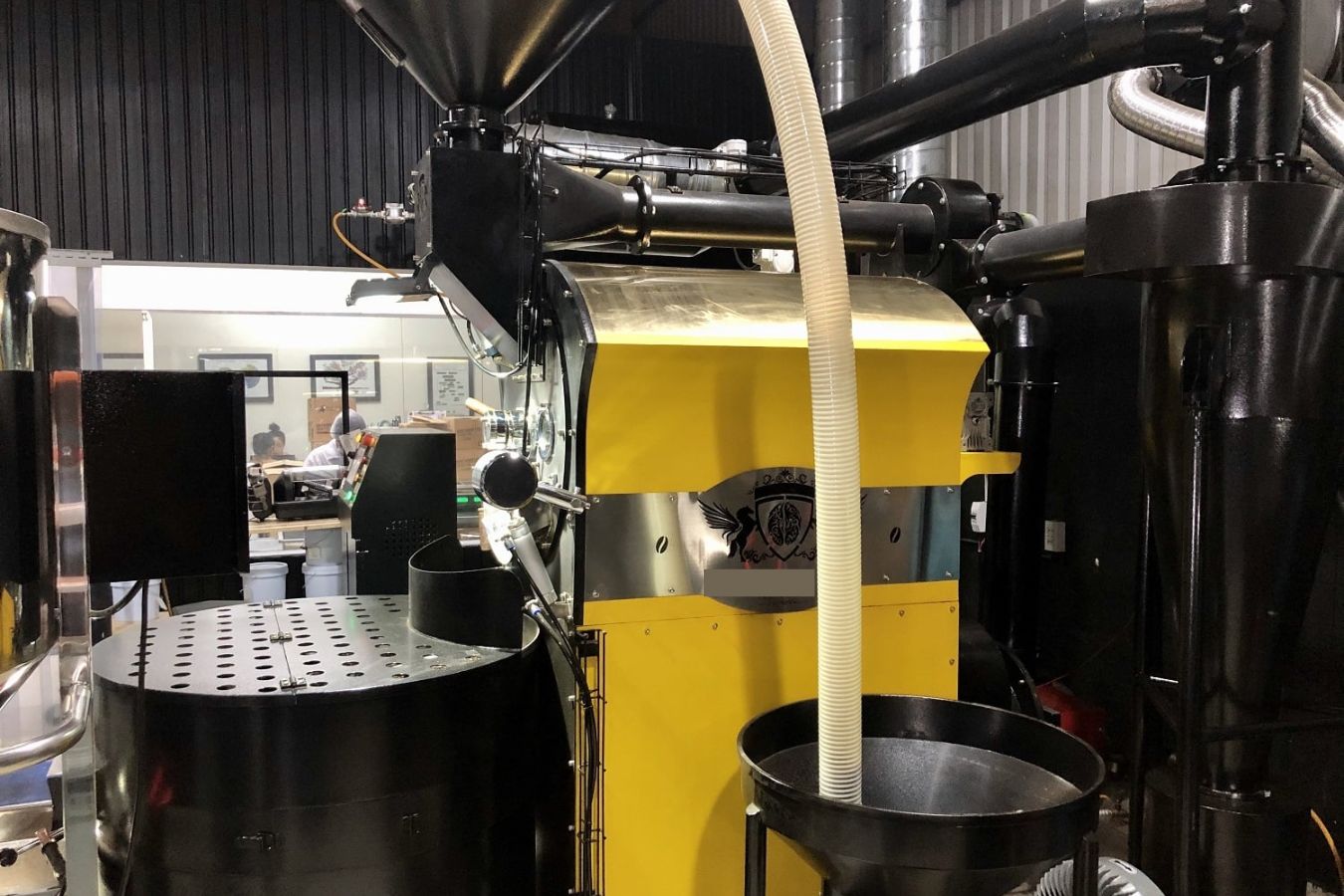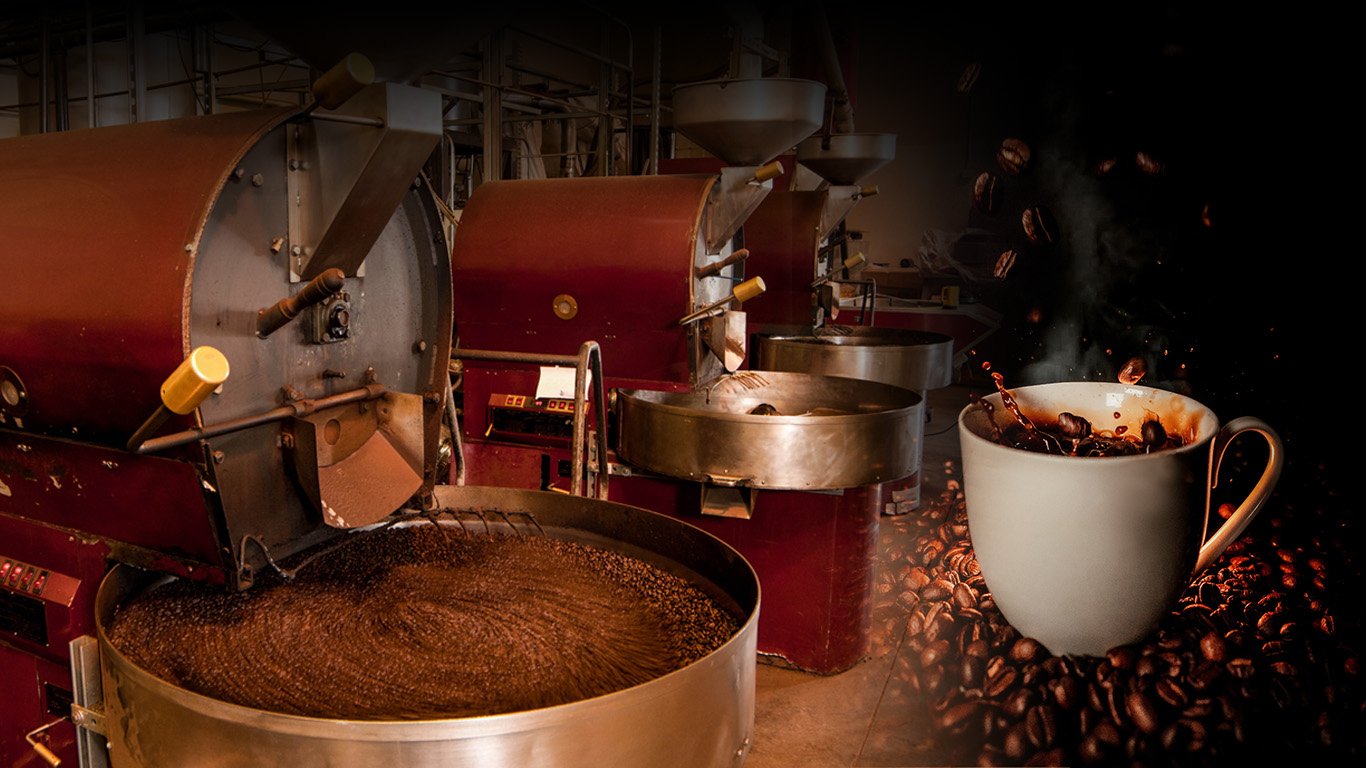Roasting: The Art of Transforming Beans
Roasting coffee beans is both a science and an art, transforming raw, green coffee beans into the aromatic, flavorful coffee we love. This journey involves careful attention to detail and a deep understanding of the chemical changes that occur during roasting. This blog post explores the roasting process, its importance, different roast levels, how they impact flavor, and some popular roasting techniques and technologies used by roasters worldwide.
The Roasting Process and Its Importance
Roasting coffee beans involves heating them to temperatures between 370°F and 540°F (188°C to 282°C) for a specific period, causing chemical reactions that develop the beans' flavor, aroma, and color. This process defines the final taste profile of the coffee. The main stages of roasting include drying, browning, and development (or roasting).
Drying Stage: The beans start by losing moisture. This stage typically lasts 4-8 minutes, depending on the roasting method and the desired roast level. Proper drying is essential for even roasting, as uneven moisture content can lead to inconsistent roasting, resulting in beans with varied flavor profiles. During this stage, the beans transition from their green color to a yellowish hue.

Browning Stage: As the beans reach around 320°F (160°C), they start to brown due to the Maillard reaction, a chemical reaction between amino acids and reducing sugars that gives browned foods their distinctive flavor. This stage is where the beans develop their initial flavors and aromas. The browning stage is critical for developing the bean's body and complexity. The length of this stage can be adjusted to emphasize different flavor notes in the coffee.

Development (Roasting) Stage: The beans reach their peak temperature and begin to crack, producing a sound known as the "first crack." This stage determines the final flavor profile and color of the coffee beans. The development stage can be extended to achieve darker roasts, where the beans may go through a "second crack," indicating further chemical changes. The duration of this stage significantly impacts the roast level and, consequently, the flavor profile of the coffee.

The importance of roasting lies in its ability to bring out the unique characteristics of each coffee bean. Different beans have different flavor potentials based on their origin, variety, and processing method. Roasting enhances the inherent flavors and aromas, making the coffee more enjoyable and distinctive. A skilled roaster can highlight specific flavor notes, such as fruity, floral, chocolatey, or nutty characteristics, by manipulating the roasting profile.
Roast Levels and Their Impact on Flavor
Roast levels can significantly influence the flavor profile of coffee. The three primary roast levels are light, medium, and dark, each offering a unique taste experience.

- Light Roast: Lightly roasted beans are heated to an internal temperature of around 356°F to 401°F (180°C to 205°C). They are typically roasted until the first crack and no further. Light roasts retain most of the original flavors of the bean, including floral and fruity notes, with a bright acidity. They are lighter in color and have a dry surface. Light roasts are favored for their ability to showcase the terroir of the coffee, highlighting the bean's origin characteristics, such as the fruity and floral notes typical of Ethiopian coffees or the bright acidity of Central American beans.
- Medium Roast: Medium roasted beans reach temperatures of 410°F to 428°F (210°C to 220°C). These beans are roasted until just before the second crack. Medium roasts offer a balanced flavor profile, combining the original bean characteristics with a more pronounced sweetness and body. They are medium brown in color and have a slightly oily surface. Medium roasts strike a balance between acidity and body, making them a popular choice for many coffee drinkers. They can highlight a wide range of flavors, from caramel and chocolate to fruity and nutty notes.
- Dark Roast: Dark roasted beans are heated to temperatures between 464°F and 482°F (240°C to 250°C) and roasted until the second crack or beyond. Dark roasts have a bold, smoky flavor with low acidity and a heavy body. The original bean flavors are often overshadowed by the roasting process, resulting in a more uniform taste. They are dark brown to black in color and have an oily surface. Dark roasts are known for their robust and intense flavor, often described as smoky, spicy, or chocolaty. They are popular in espresso blends and French roasts, providing a strong, full-bodied cup.
Each roast level offers a unique flavor profile, and personal preference plays a significant role in choosing the right roast. Coffee aficionados may prefer light roasts for their complexity and bright flavors, while others might enjoy the balanced, sweet profile of a medium roast or the bold, intense taste of a dark roast.
Popular Roasting Techniques and Technologies
Roasters use various techniques and technologies to achieve their desired roast profiles. Some of the most popular methods include:
Drum Roasting: This traditional method involves placing beans in a rotating drum that is heated externally. The beans tumble inside the drum, ensuring even heat distribution. Drum roasters are known for their consistency and ability to produce a wide range of roast levels. The drum roaster's design allows for precise control over the roasting process, enabling roasters to experiment with different profiles and achieve their desired flavor characteristics.

Hot Air Roasting: Also known as fluid bed roasting, this technique uses hot air to roast the beans. The beans are suspended in a stream of hot air, which roasts them evenly. Hot air roasters are faster and can highlight the bean's original flavors better than drum roasters. This method is often used for small-batch roasting and is praised for its ability to produce clean, bright flavors.

Hybrid Roasting: Combining elements of both drum and hot air roasting, hybrid roasters offer the benefits of both methods. They provide even heat distribution and can produce consistent and high-quality roasts. Hybrid roasters are versatile and can be used to achieve a wide range of roast levels, making them popular among specialty coffee roasters.

Infrared Roasting: This modern technique uses infrared radiation to heat the beans. It offers precise control over the roasting process, resulting in uniform and consistent roasts. Infrared roasters are also energy-efficient and can produce less smoke than traditional methods. This technology is gaining popularity among innovative roasters looking to improve efficiency and reduce environmental impact.

Convection Roasting: In this method, hot air is circulated around the beans to roast them evenly. Convection roasting is known for its ability to produce uniform roasts with minimal charring. This technique is often used in commercial roasting operations where consistency and efficiency are critical.

Roasting technologies have evolved significantly over the years, with advancements in automation, control systems, and data analysis. Modern roasters often use software to monitor and control the roasting process, allowing for precise adjustments and consistency in every batch. Some roasters also use advanced sensors to measure bean temperature, moisture content, and other variables, providing real-time data to optimize the roasting profile.
The Role of the Roaster
The roaster's expertise and experience play a crucial role in the roasting process. A skilled roaster understands the unique characteristics of each bean and can tailor the roasting profile to bring out the best flavors. Roasters often experiment with different roast levels, techniques, and profiles to achieve the desired flavor balance and complexity.

Roasting is a continuous learning process, with roasters constantly refining their techniques and exploring new methods. Many roasters participate in cupping sessions, where they taste and evaluate different roast profiles to fine-tune their approach. Cupping allows roasters to assess the coffee's aroma, flavor, acidity, body, and aftertaste, providing valuable insights into the impact of the roasting process.
The Journey from Bean to Cup
The journey from green coffee beans to a perfectly roasted cup of coffee involves many steps, each contributing to the final product's quality and flavor. The roasting process is a critical link in this chain, transforming raw beans into a beverage that delights the senses and brings joy to coffee lovers worldwide.

Understanding the roasting process and its impact on flavor can enhance your appreciation of coffee. Whether you're a casual coffee drinker or a dedicated aficionado, exploring different roast levels and techniques can open up a world of flavors and experiences. So next time you sip your coffee, take a moment to savor the journey those beans have taken to reach your cup.
From the careful selection of green beans to the artful roasting process, every step is a testament to the passion and dedication of coffee roasters. Their expertise and commitment to quality ensure that each cup of coffee delivers a unique and satisfying experience. Embrace the diversity of flavors and roast profiles, and enjoy the rich tapestry of tastes that coffee has to offer.
In conclusion, roasting coffee is a meticulous process that significantly impacts the flavor and aroma of the final cup. Understanding the different roast levels and techniques helps coffee enthusiasts appreciate the complexity and artistry involved in creating their favorite brews. Whether you prefer the bright acidity of a light roast or the bold richness of a dark roast, there's a perfect roast level for every palate. So next time you enjoy a cup of coffee, remember the art and science that went into transforming those humble beans into a delightful beverage.





























